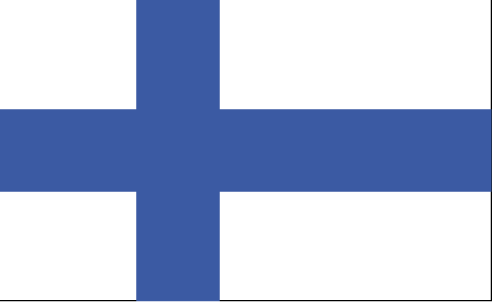Login form
Customs of Finland
Marriage and Family
 Many young couples choose to live together before or instead of marriage. When a couple marries, the two have the right to keep their original surnames or take that of their spouse. Their children may also bear either surname.
Many young couples choose to live together before or instead of marriage. When a couple marries, the two have the right to keep their original surnames or take that of their spouse. Their children may also bear either surname.
Families are small (having one or two children is the norm), and the Finnish government, worried about a shrinking labor force having to fund benefits for increasing numbers of retired people, has been trying to increase the birthrate.
Maternity and child-care provisions are among the most generous in the world—women are entitled to paid maternity leave of up to 11 months, and their husbands can share a portion of that leave. Day-care facilities are provided by the government free of charge, and mothers receive a regular allowance for each child under age 17. Both parents usually work outside the home. 48 percent (1999)Finns take it for granted that women are involved in careers, politics, and social issues as well as motherhood, and that men share household responsibilities.
Eating
Finnish cuisine has been influenced by many cultures, from French to Russian, but it includes a wide variety of Finnish specialties using fish and seafood, wild game, and vegetables. Reindeer steak is a traditional specialty, as is salmon. Wild berries (blueberries, cloudberries, strawberries, and raspberries) are popular in desserts and liqueurs. Potatoes, cheeses, and a Finnish buffet (such as the smörgåsbord) are also very popular. Rye bread is common, and open-faced sandwiches are eaten for snacks and at breakfast. Milk and coffee are the most common beverages for everyday drinking.
Mealtime etiquette is much the same as in other parts of northern
Socializing
It is customary to shake hands when greeting. The phrase for a general greeting is Hyvää päivä (“Good morning” or “Good afternoon”), or just Päivä. Another expression for “Good morning” is Hyvää huomenta. Finns are fairly informal and the use of first names is now widespread.
When invited to someone’s home, it is important to be punctual, and it is usual to take a gift of cut flowers. Guests are sometimes invited to join their hosts in the sauna, a steam bath produced by pouring water over heated rocks—a Finnish invention.
Recreation
The outdoors and physical fitness are important to the Finns, who enjoy a wide range of activities, including walking, fishing (and ice fishing), hunting, camping, skiing, track and field, basketball, Finnish baseball (pesäpallo), ice hockey, cycling, and boating. Golf is gaining in popularity; some people even play on the ice in the winter. The sauna is a traditional way to relax and socialize for people of all ages. During a retreat to a summer cottage, a popular activity is to run from a hot sauna for a swim in a cold, clear lake nearby. People enjoy watching television and going to the movies. In
Holidays and Celebrations
Official holidays include New Year’s Day (1 January), Epiphany (6 January), Easter (Friday through Monday), Labor and May Day (30 April and 1 May), Ascension, Whitsunday (Pentecost), Midsummer (two days around the June solstice), Independence Day (6 December), Christmas Eve (24 December), Christmas Day (25 December), and 26 December. The Finland Festivals (16 of them) are held between June and September around the country and include art, music, dance, opera, and theater events.
On Palm Sunday preceding Easter, children dress up as Easter witches and go from door to door reciting charms. They receive sweets or money for their verses. At Easter, families decorate eggs and grow grass on plates in the home. For both Labor and May days (Vappu), people enjoy street carnivals and other celebrations in honor of both laborers and springtime. Midsummer is celebrated with huge bonfires by a lake, and urban residents usually leave cities and towns to go to the countryside for the day. The blue-and-white Finnish flag is also prominent on Midsummer’s day. Christmas is a time of peace, family, and gifts. The main festive meal is eaten on Christmas Eve after a visit to family graves. Later, Father Christmas arrives with gifts for the children. Families in rural areas enjoy time in the sauna on Christmas Eve as well. Christmas Day and 26 December are days for visiting and relaxing.
Source: Encarta Interactive World Atlas

